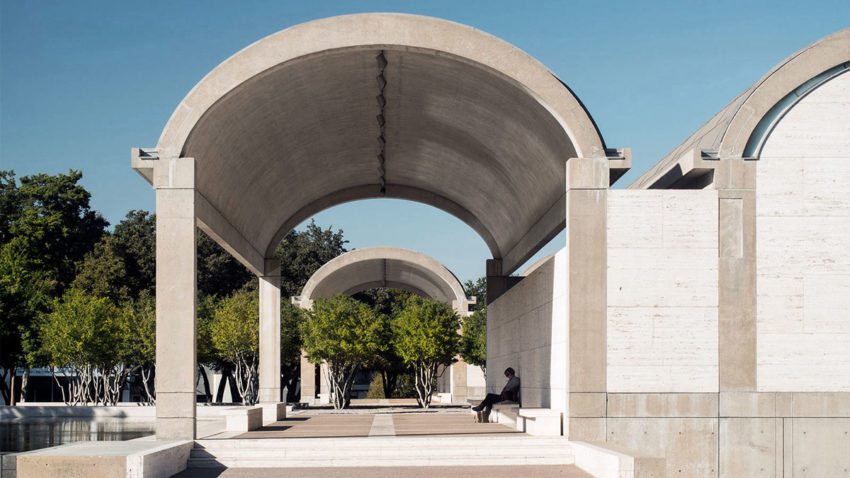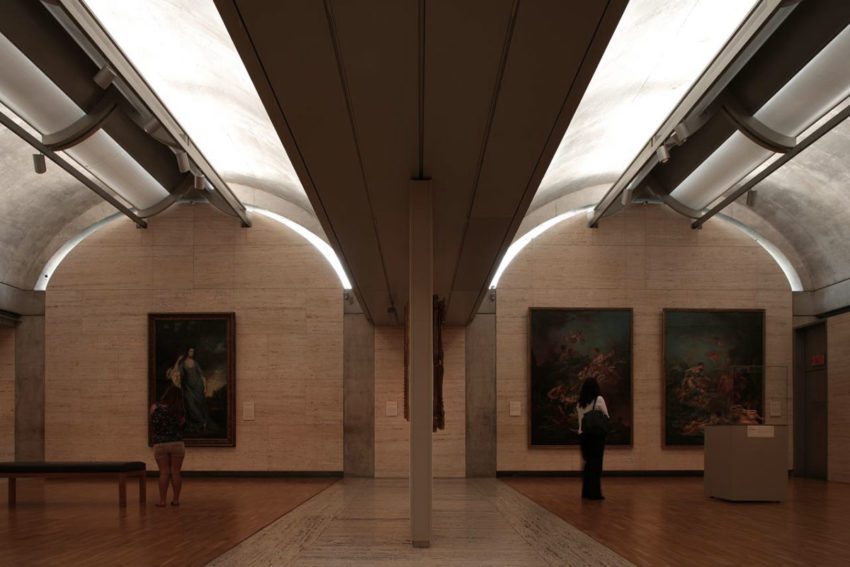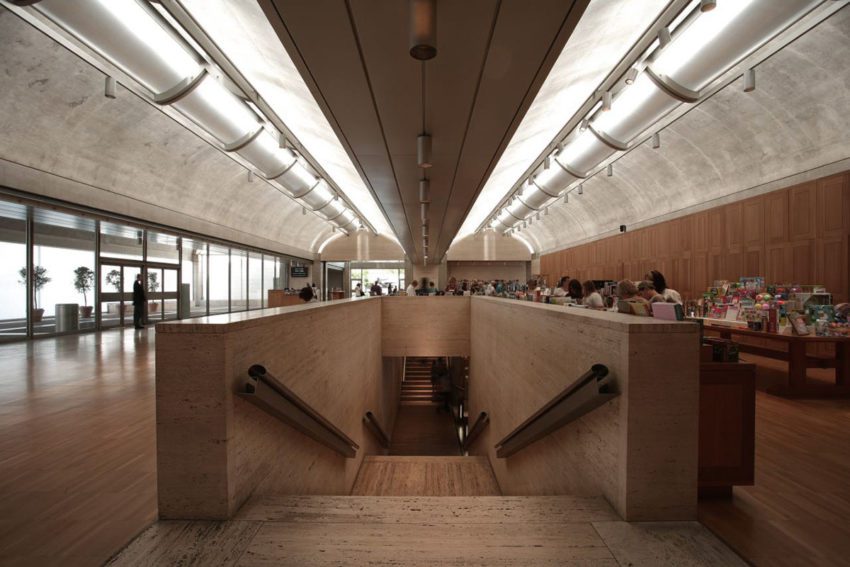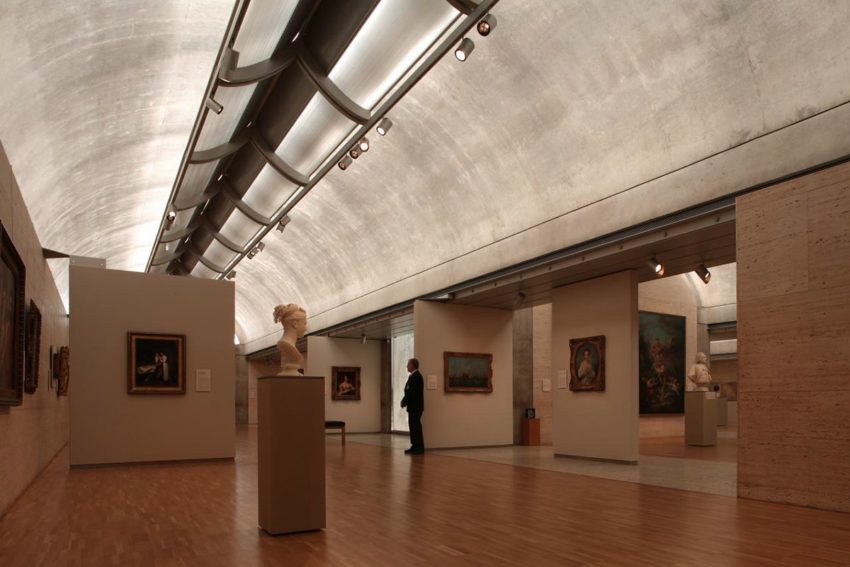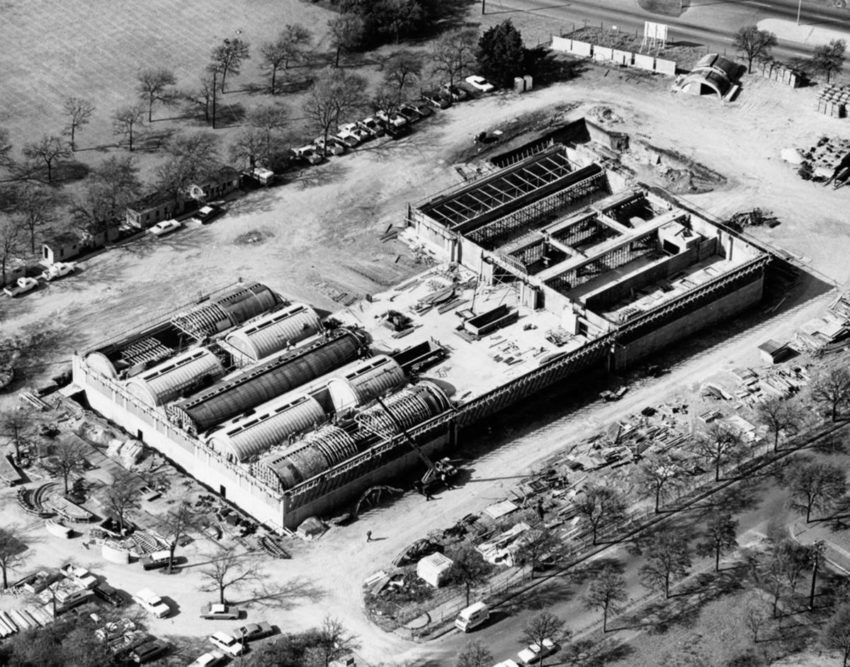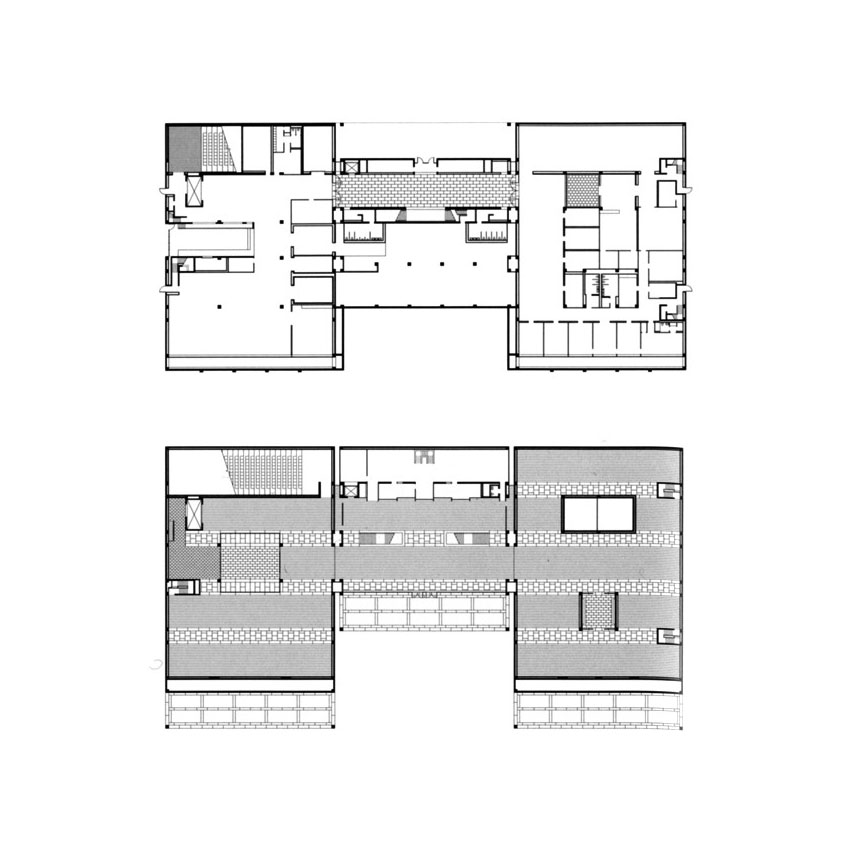The Kimbell Art Museum, designed by Louis I. Kahn in 1972, is widely regarded as one of the modern era’s outstanding architectural achievements. Kahn’s innovative design philosophy, which aimed to create buildings in which “light is the theme,” is fully realized at the Kimbell’s. The Museum features narrow plexiglass skylights along the top of its cycloid barrel vaults, which allow natural light to filter in and illuminate the space. To diffuse this light, wing-shaped pierced aluminum reflectors hang below, giving the vault surfaces a silvery gleam and providing a subtle yet perfect illumination for the artworks on display.
Kimbell Art Museum Technical Information
- Architect1-4: Louis Kahn | Biography & Bibliography
- Location: Fort Worth, Texas, United States
- Topics: Concrete, Museums, Structuralism, Vaults
- Project years: 1966 – 1972
- Drawings: © Louis Kahn Architects, ETH Zurich University
- Photographs: © Richard Anderson, © Nic Lehoux
The museum has as many moods as there are moments in time, and never… will there be a single day like the other.
– Louis Kahn5
Kimbell Art Museum Photographs
Light and Space: The Iconic Architecture of the Kimbell Art Museum
In 1966, the Board of Directors of the Kimbell Art Foundation commissioned the construction of a museum that would set a new standard in architectural design. With the support of the foundation’s first director, Richard F. (Ric) Brown, the Kimbell Art Museum was born.
Designed to embody the idea that “light is the theme,” the central (west) facade of the Museum is a stunning display of architectural excellence. The three 100-foot bays, each fronted by an open, barrel-vaulted portico, are a testament to the building’s focus on natural light. The central entrance bay is recessed and glazed, providing a warm and inviting entrance to the Museum’s interior.
Inside, the defining feature of the space is its light-filled vaulted spaces, which are five deep behind each of the side porticos and three deep behind the central one. Three courtyards punctuate the interior, adding to the building’s open and airy feel. Though thoroughly modern in its lack of ornamentation, the building draws inspiration from the grand arches and vaults of Roman architecture, a nod to the timeless beauty of classical design. The principal materials are concrete, travertine, and white oak.
The Structure of the Art Museum
One of the architect’s fundamental tasks is formulating the structure, or arrangement of forms, that the building will assume. Each architect has an individual approach to developing that initial concept. Kahn is often quoted as first asking, “What does this building want to be?” He believed that the structure’s essence started with the room and thinking about how that space would be used and how it should feel. From that point, the building evolved as a “family of rooms” with a simple plan based on classical proportions, repetition, and variation.
In the Kimbell case, director Richard Brown provided an initial list of essential considerations for generating ideas for the structure. In that “Pre-Architectural Program,” Brown explicitly stated that “natural light should play a vital part in illumination.” This stipulation, along with Kahn’s keen interest in using natural light, resulted in Kahn’s early concept of a room with a vaulted ceiling that would allow natural light to enter the space from above. The vault also appealed to Kahn’s admiration for ancient structures—from Roman arches and storage warehouses to Egyptian granaries.
Kahn determined the vault’s exact shape through his collaboration with a structural engineer, Dr. August E. Komendant. Unlike semicircular vaults, the cycloid vault has gently rising sides that give the impression of monumentality without overpowering the visitor. By mathematical definition, the cycloid is the curve traced by a point on a circle’s circumference that rolls on a straight line without slipping. This geometric form can support its weight and has been likened to an eggshell for its ability to withstand heavy pressure.
Each vault’s weight is directed at the Kimbell through four corner columns measuring two square feet. Unlike classical precedents, Kahn’s vaults are interrupted at the top by skylights and require concrete struts that connect the shells at ten-foot intervals. Additionally, Kahn and his engineers placed long steel cables inside along the length of each vault. After the concrete had hardened for a week, hydraulic jacks tightened the cables to create a post-tensioning system that distributes and supports the roof’s weight—similar to a suspension bridge.
Like classical buildings (such as the Parthenon), Kimbell’s structure is based on a consistent mathematical model. The basic plan comprises sixteen cycloid vaults (100 x 20 feet) arranged in three parallel units of six, four, and six in the Kimbell. Other elements are based on a ratio of 20 to 10. For example, wood sections measure 20 feet on the floor, and travertine sections are 10 feet. The building is based on these “rules” of logic, enabling the visitor to follow and “read” the structure easily.
Although the structure is based on a simple plan of unadorned, repeated forms, Kahn also introduced variations on those primary forms and “themes.” The porticos at the Kimbell’s entrance on the west side of the building first introduce the vault to the approaching visitor and demonstrate the form’s versatility. Visitors within the Museum see vaults covering the galleries, an auditorium, and the Buffet Restaurant. Kahn also varied the size of the courtyards. The North courtyard is 40 square feet, while the South patio is 20 square feet.
The “rooms” were designed to relate to the visitor personally to enhance their experience of the artworks on view. Space was designed to be as flexible as possible within the confines of the vaulted areas. Moveable walls can be attached to the soffits (the underside joint between arches) in various configurations to best suit the Museum’s display needs.
Materials Used
To ensure a structure will stand the test of time, architects choose strong and durable materials pleasing to the eye. Kahn preferred simple forms and natural materials. To achieve a sense of serenity and elegance in the Kimbell, Kahn selected materials that complemented each other in tone and surface: travertine, concrete, white oak, metal, and glass. Simple and unadorned, each of these materials shows its innate character through its texture variation.
Concrete, according to Kahn, was “a noble material if used nobly.” In revolutionizing the modern use of materials, Kahn viewed concrete as an aesthetic and structural choice. In Kimbell’s galleries, concrete vaults shimmer with light to create a subtle luminosity that Kahn compared to a “silvery powdered moth’s wing.” Reinforced concrete also supports the structure’s weight through vaults, walls, and piers. Creating the right look for the concrete was a matter of profound importance to Kahn, who went to great lengths to select the proper color (soft gray with lavender tones) determined by the mixture of sand and cement.
Numerous wall tests were poured and allowed to cure in the Texas sun until they found the suitable surface qualities and the perfect match for the travertine’s soft tones. Kahn believed buildings should tell how they were made and that the construction process incidents should be left as a visual record. Accordingly, when they occurred, marks from plywood mold forms, bits of rubber, and air pockets remain for all to see (although the workers practiced attaining perfection). Travertine, on the other hand, acts only as “in-fill” material. Kahn even called it wallpaper. (Glass and wood are also non-weight-bearing materials in the Museum.)
The travertine used for the Kimbell was imported from Tivoli, near Rome, Italy. This material is riddled with irregularly shaped holes left by gases and pieces of vegetation trapped in hardened layers of calcium carbonate. Despite its “Swiss-cheese” texture, travertine is a durable material used since antiquity for countless buildings.
Kahn was deeply influenced by monuments and ancient ruins he studied as a student and sketched on his travels through Italy, Greece, and Egypt. Kahn used such materials as travertine in his buildings to emulate the timeless and monolithic qualities he admired in those ancient structures. Over one million pounds of travertine sheath much of the Kimbell’s interior and exterior walls, gallery floors, porches, and stairs. These thin, rough-hewn pre-cut slabs (5/8 inches thick) were shipped from Italy in 17 boatloads over nine months. Fissures and openings were not filled. Every attempt was made to retain the material’s natural appearance.
Lead was selected for the roof cover for its color, dull sheen, and discreet, natural appearance. Because this soft metal ages quickly, Kahn believed it would look consistent with the travertine and concrete. In keeping with his palette of warm and cold tonal harmonies, Kahn also selected white oak for the gallery floors, doors, and cabinetry; anodized aluminum (a light-weight metal noted for its high reflectivity that has been covered with a protective oxide coating) for the soffits and reflectors; and mill-finished steel for windows and door frames, elevators, and handrails, as well as in the kitchen, conservation studio, and darkroom. Kimbell’s uniquely shaped handrails are made of folded metal because Kahn preferred emphasizing the sheet quality of the material instead of pretending that it worked like a solid material, such as wood.
Kimbell Art Museum Site Plan and Floor Plan
Louis Kahn’s Kimbell Art Museum Image Gallery
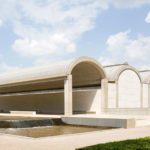
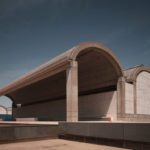
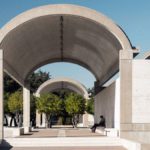
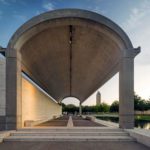


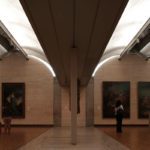
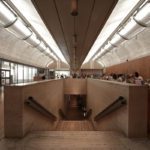

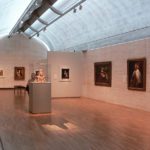
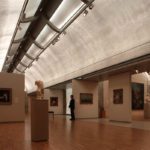

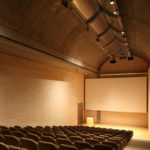
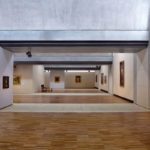


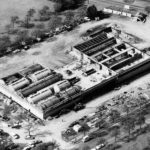
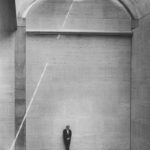
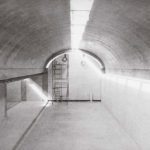
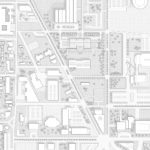
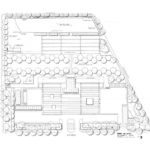
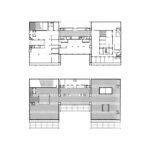
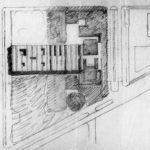
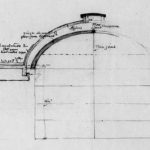
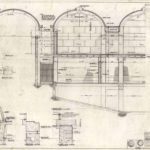
About Louis Kahn
Louis Kahn (1901-1974) was a prominent American architect based in Philadelphia who made a lasting impact on the architectural world through his innovative proposals and influential teaching. He is widely recognized as one of the most influential architects of the 20th century, known for his creation of a distinctive, monumental, and monolithic style.
Kahn’s buildings are characterized by their massive structures, which embrace their weight, materials, and construction methods rather than concealing them. His use of raw materials such as concrete and brick, combined with his focus on the play of light and shadow, gives his buildings a timeless and powerful presence that has inspired architects and designers for decades. Some of his most notable works include the Kimbell Art Museum in Fort Worth, Texas, the Salk Institute in La Jolla, California, and the National Assembly Building in Dhaka, Bangladesh.
Through his work, Kahn aimed to create architecture that was deeply connected to its surroundings and would stand the test of time, both aesthetically and structurally. He was a master at balancing form, function, and materials, and his legacy continues to influence architects and designers worldwide.
Full Bio of Louis Kahn | Works of Louis Kahn
- Structural Engineer: August E. Komendant
- Mechanical/Electrical Engineer: Cowan, Love & Jackson, Inc.
- Landscape Architect: George E. Patton, Inc.
- Project Architect: Marshall Meyers
- Louis I Kahn: Revised and Expanded Edition by Robert McCarter


